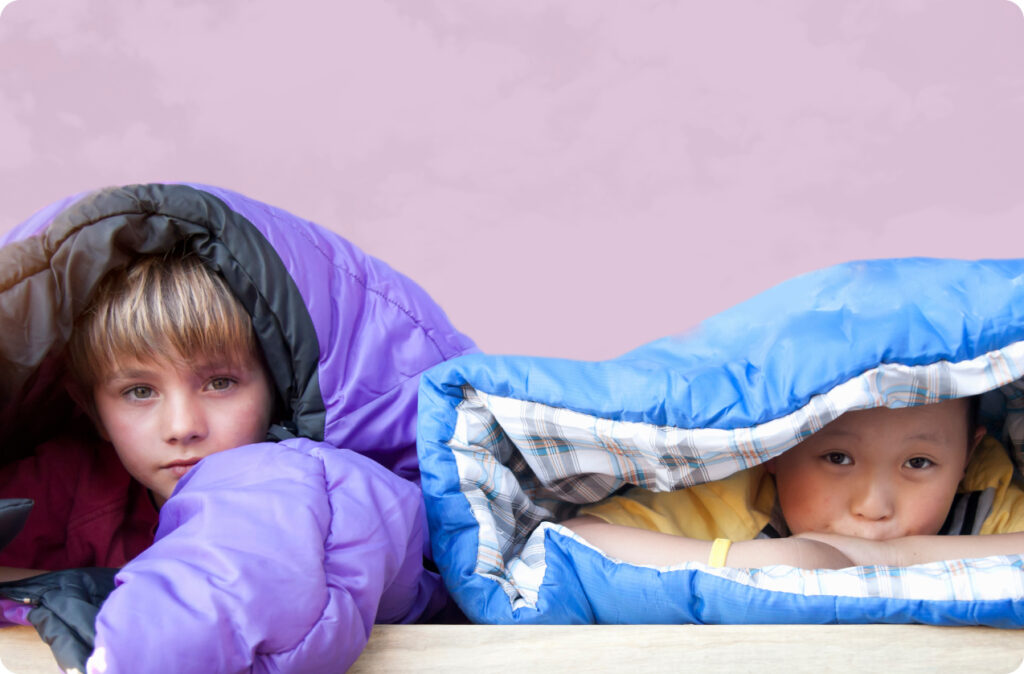Evidence needs to guide every decision we make in the education and care sector. And now, more than ever, research findings are clear that children do best when they have strong and connected relationships with the adults who are supporting and caring for them. Discover how the Circle of Security helps children build better relationships.
It’s all about the relationships
Strong relationships help children to build a sense of security so they can conserve their energy and grow to their potential. When children feel anxious and insecure, they are constantly watchful for what may happen and feel they need to protect themselves from harm.
As educators, what can we do to help build strong connections?
You’re already doing a lot when it comes to building connections with the children in your care. One of the most valuable frameworks on which to base practice is the Circle of Security, also known as COS.

When attending to a child’s needs it helps to understand how the child sees their world. It’s always a good start to take time to think about the child’s perspective and what they might be feeling. Making decisions based around maintaining the quality of the relationship between you both will also help.
Circle of Security—a reminder
The way a child is responded to will affect them throughout the rest of their life. Children who are more securely attached feel confident because they know someone they trust will come to them when they need help. This sense of connection helps children to believe that the world is generally safe and predictable.
The Circle of Security concepts most helpful to keep in mind
Working in the education and care sector means you have a lot on your mind. However, these concepts are worth remembering:
- Be the secure base—each child needs you to support their exploration, watch over them, help them, enjoy experiences with them and delight in them. Being a secure foundation also extends to sleep and settling times.
- Be a safe haven—children need you to welcome their return back to you.
As a child, I need you to
- Protect me
- Comfort me
- Delight in me
- Help me to organise my feelings
- Always be bigger, wiser, stronger and kind

Why sleep times are a great way to build relationships
The concepts of the Circle of Security don’t stop once a child is going off to sleep. In fact, sleep and settling times are peak times in a child’s day and night when it’s a critical time for children to feel safe. They also take up a lot of hours in a child’s day (and night), so sleep can’t be excluded from other peak care and connection times.
Without feeling secure, children can’t relax and allow themselves to be vulnerable.
How is children’s sleep different to adults’ sleep?
Babies and children have much shorter sleep cycles and sleep more lightly than adults. Around 40 minutes is the average sleep cycle for babies and children, whose brains are immature and still forming networks.
As children drop off to sleep, they cycle through stages of light and deep sleep (quiet sleep), and then they dream during a phase of sleep known as REM—Rapid Eye Movement. Babies spend a lot of their time in REM. This is when active sleep happens.
It is normal for children to wake up during their sleep. As they transition between light sleep and wakefulness stages, they will often wake up and need help to resettle back to sleep. This is common, especially when a child needs help to initially go to sleep.

Adults also wake up during sleep periods, as often as every 1.5 hours, as they transition from sleep to wakefulness. Though, unlike children, adults don’t need the same high level of support to drop off to sleep. We manage our own settling periods independently by going to bed, pulling up the covers, turning off the light, etc. We don’t need our parents or caregivers to pat us off to sleep and offer us milk each time we wake. However, there was a time for all of us when we did need help.
What’s essential for educators to remember about the Circle of Security?
Use the Circle of Security framework to better read the emotional needs of children in your care, especially when they are tired and ready for sleep.
As educators, keep attachment at the forefront of your mind, and you’re more likely to make the right decisions.
- Think about the child’s emotional needs and what is behind their behaviour. Are they showing tired signs through their crying and emotional “meltdowns?”
- Consider where a child is on the circle (e.g., on the top or the bottom).
- Always be the bigger, wiser, stronger and kind adult. There will be times when you need to “take charge” and make decisions based on what’s right for the child. For example, they might want to keep playing when it’s clear they are tired and need to sleep.
- Care well for your own emotional needs. You cannot give what you haven’t got.

Circle of Security when it’s sleep time
As early years educators, you are already experienced in sleep management. The Circle of Security concepts will help to understand a child’s emotional needs at a particular time and the way they may be communicating these needs. The sleep-tracking feature in the Playground educator app can help better understand their sleep cycles.
Consider if the child
- Is just spending a little time exploring their sleep space and feels secure, or, do they need your help?
- Seems to be able to manage their own emotions or do they need your assistance? Remember, small people can have big feelings.
- Needs their self-esteem boosted. Use language that is supportive and nurturing.
Importantly
Try to keep the same pre-settling routine when settling for sleep. Ensure the child is clean, dry, comfortable and not hungry when settling them. Look after their physical as well as their emotional needs.
5 key points
- Acknowledge your own expertise and wisdom. You can’t be bigger, stronger, wise and kind if you don’t believe you are.
- Children do best in situations where they feel safe and emotionally connected.
- Every child is different and will have their own unique needs.
- Be consistent in your responses; this will help build the child’s sense of security.
- Reach out for support if you need it.
References
- https://www.pitc.org/about
- Infant/Toddler Resource Guide | Early Childhood Training and Technical Assistance System (hhs.gov)
- Red Nose Safe Sleeping Recommendations | Red Nose Australia
- Safe sleep and rest practices | ACECQA
- Safe sleeping and resting for infants and young children procedure (education.sa.gov.au)
You might also be interested in…

Blog
How Educators Can Foster Better Relationships with Children
Quality Area 5 of the National Quality Framework focuses on fostering relationships with children to maintain sensitive and respectful connections ….
Read more

Blog
Sleep and Primary Caregiving in ECEC Services
Primary caregiving relationships in the education and care sector help to build strong foundations for children’s development. It’s not only ….
Read more

Blog
Agency in early childhood—a child’s right to choose
As babies and young children grow and develop a sense of agency in early childhood, they realise that they can ….
Read more

by Dean Comeau (Marketing Team Lead)
-
First published: 23 March 2022
Written by: Dean Comeau
